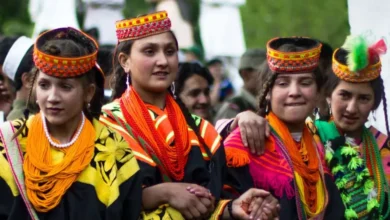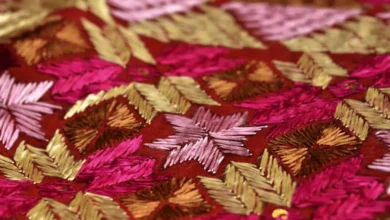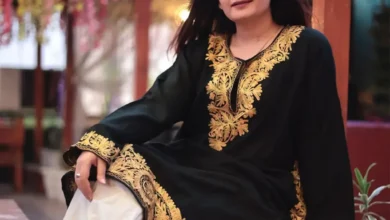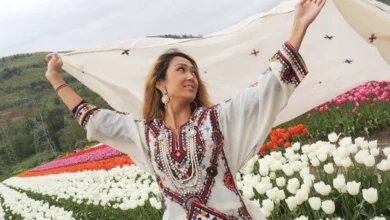Picture this: a man standing atop a windswept ridge in the Hindu Kush, his silhouette defined by loose trousers, a long tunic, and a soft, round woolen cap resting gently on his head. This isn’t just clothing — it’s a declaration of heritage, resilience, and belonging. Welcome to the world of Pashtun attire, where every fold, stitch, and hue tells a story centuries in the making.
This article explores how traditional garments like the Pakol cap and Shalwar Kameez are far more than fabric — they’re living symbols of Pashtun cultural identity. We’ll trace their origins, decode their meanings, examine regional variations, and reveal how these garments have weathered war, migration, and globalization. You’ll discover why a simple hat became an icon of resistance, how embroidery carries ancestral whispers, and what modern Pashtuns are doing to keep their sartorial legacy alive.
Whether you’re a history buff, a fashion enthusiast, or simply curious about global cultures, prepare to see Pashtun clothing not as costume — but as culture woven into cloth.
Who Are the Pashtuns? The People Behind the Patterns
Before diving into the clothes, let’s meet the people who wear them with pride.
See also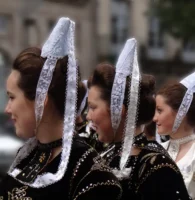 Brittany’s Traditional Coiffes: The Lace Headdresses of Breton Women
Brittany’s Traditional Coiffes: The Lace Headdresses of Breton WomenThe Pashtuns (also called Pathans or Pakhtuns) are one of the largest ethnic groups in Central and South Asia, numbering between 40 to 60 million (Library of Congress, 2021). They primarily inhabit southern and eastern Afghanistan and northwestern Pakistan — a region often referred to as Pashtunistan.
Their society is deeply tribal, organized into clans like the Durrani, Ghilzai, Yusufzai, and Afridi. What binds them isn’t just bloodline — it’s Pashtunwali, an ancient moral code that governs daily life.
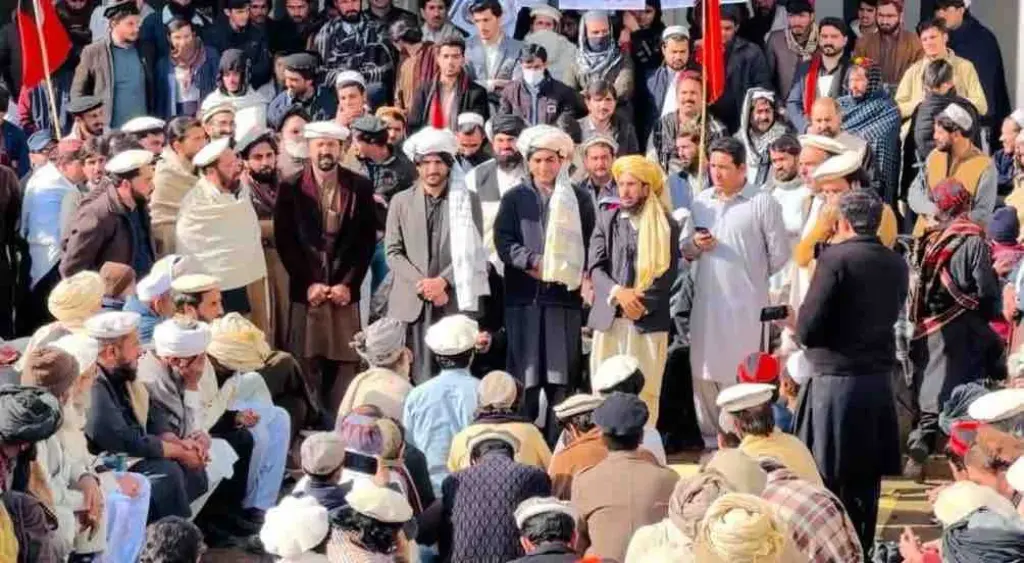
What Is Pashtunwali?
Pashtunwali translates to “the way of the Pashtuns.” It emphasizes:
- Melmastia — unconditional hospitality
- Nanawatai — granting asylum to those seeking refuge
- Badal — justice or revenge
- Nang — honor above all else
This code shapes everything — including how Pashtuns dress. Clothing must reflect modesty, dignity, and practicality — values central to Pashtun cultural identity.
See also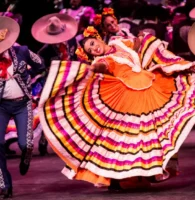 Traditional Mexican Clothing: From Huipil to Charro Suit
Traditional Mexican Clothing: From Huipil to Charro SuitThe Shalwar Kameez: The Everyday Uniform of Identity
If there’s one garment that unites millions across borders, classes, and generations, it’s the Shalwar Kameez.
Worn by men and women from Peshawar to Kabul, Islamabad to Jalalabad, this outfit is the backbone of Pashtun clothing. But for Pashtuns, it’s more than convenience — it’s continuity.
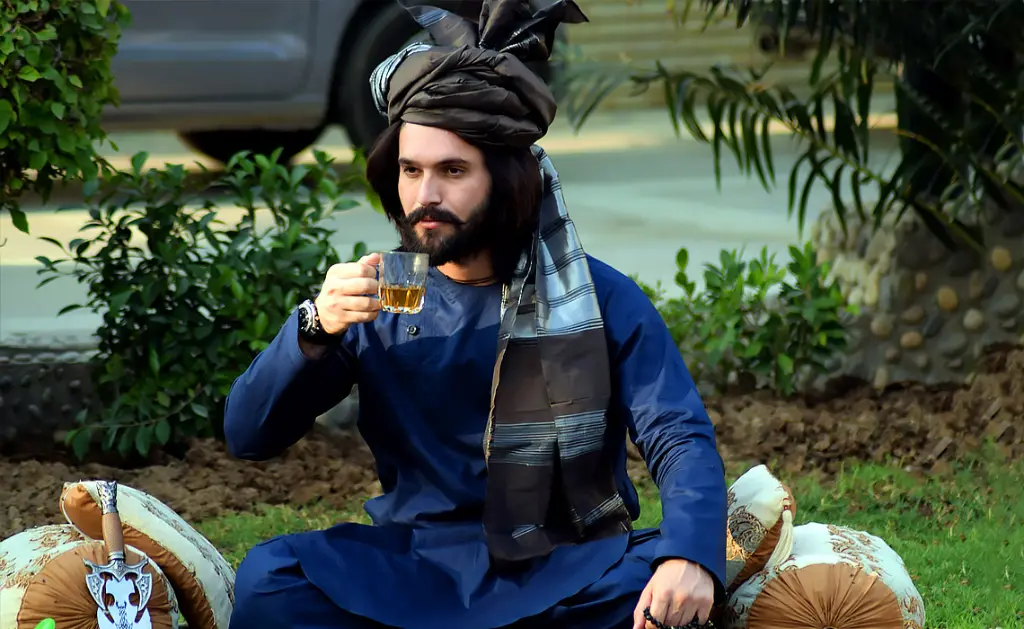
Anatomy of the Garment
The Shalwar Kameez consists of three core pieces:
- Kameez: A long tunic or shirt, usually knee-length or longer for men, ankle-length for women.
- Shalwar: Loose trousers gathered tightly at the ankles.
- Dupatta (for women): A long scarf draped over the head or shoulders.
Its design is brilliantly functional. The loose fit allows air circulation in hot climates and layering in cold mountain winters. The ankle gathers prevent tripping while walking rugged terrain — perfect for a people shaped by geography.
Why It’s More Than Just Comfort
For Pashtuns, the Shalwar Kameez is democratic attire. Rich or poor, urban or rural — nearly every Pashtun man wears it daily. This universality makes it a powerful symbol of unity.
As anthropologist Olaf Caroe noted, “In dress, as in speech, the Pathan asserts his identity” (Caroe, 1958, p. 102).
It also aligns with Pashtunwali’s emphasis on humility. Unlike flashy Western suits or ornate ceremonial robes, the Shalwar Kameez is understated — letting character, not clothing, speak first.
The Pakol Cap: From Mountain Hat to Global Symbol
No item of Pashtun attire is more instantly recognizable — or more misunderstood — than the Pakol cap.
Soft, round, and rolled at the brim, this humble woolen hat has journeyed from remote valleys to international headlines. Let’s uncover its story.
Origins in the Highlands
The Pakol (also spelled Pakul or Chitrali cap) likely originated in the mountainous regions of Chitral (Pakistan) and Nuristan (Afghanistan), areas inhabited by diverse ethnic groups including Pashtuns, Kalash, and others (Gommans, 2002).
Made from hand-spun sheep’s wool, it requires no stiffeners or linings. Its genius lies in its simplicity: the wearer rolls the brim up or down to adjust fit and warmth.
Traditionally undyed or in earth tones (brown, gray, black), the Pakol blends seamlessly with the rocky landscapes of its homeland.
The Rise of an Icon
The Pakol cap gained global fame during the Soviet-Afghan War (1979–1989). Photographs of Mujahideen commanders — especially Ahmad Shah Massoud, the “Lion of Panjshir” — almost always showed them wearing the Pakol, often tilted slightly to one side (Coll, 2004).
This cemented its image as a symbol of Afghan resistance. But crucially, it was never exclusive to fighters. Farmers, poets, teachers, and shopkeepers wore it too — making it the true “people’s cap.”
How to Wear a Pakol (and What It Means)
- Centered and firm: Suggests seriousness, authority, or formality.
- Tilted casually: Often worn by youth, signaling relaxed confidence.
- Pulled low: Common in cold weather or among elders for warmth and modesty.
Today, the Pakol remains ubiquitous. In Kabul, you’ll see university students pair it with jeans. In Swat, village elders wear it with prayer beads. For diaspora communities in London or Toronto, it’s a cherished link to home.
Colors, Fabrics, Embroidery: The Hidden Language of Dress
Look closer at Pashtun clothing, and you’ll find a rich vocabulary of color, texture, and craft.
These details aren’t random — they communicate region, occasion, status, and even mood.
Color Codes
- White: Purity, spirituality. Worn by elders, during Eid, or for prayer.
- Black/Dark Blue: Mourning, solemnity. Common at funerals.
- Green: Life, blessings. Popular at weddings and spring festivals.
- Red/Gold: Celebration, joy. Reserved for brides and major holidays.
In Afghan Pashtun communities, bright stripes on kameez signal festivity. In Pakistani tribal zones, muted earth tones reflect practicality and austerity (Sultana, 2017).
Fabrics Fit for Terrain
| Region | Preferred Fabric | Why? |
|---|---|---|
| Mountains (Swat, Kunar) | Wool | Warmth, durability |
| Plains (Peshawar, Quetta) | Cotton | Breathability, comfort |
| Urban Centers | Cotton blends, synthetics | Affordability, style |
Wool dominates highland Pakol caps and winter shalwar. Cotton rules summer kameez in the cities.
Embroidery: Where Women Speak Through Thread
While men’s attire stays simple, Pashtun women transform clothing into art.
Common techniques include:
- Khamak: Delicate chain-stitch floral patterns.
- Suzani-style: Bold motifs like pomegranates (fertility), cypress trees (eternity), and paisleys (life).
- Shisha (mirror work): Tiny mirrors sewn into fabric for sparkle and protection against the evil eye.
These designs aren’t just decoration — they’re heirlooms. Mothers teach daughters stitches that carry family stories. As artisan Fatima from Mardan told researchers: “My needle is my voice. Through thread, I speak to my daughters of who we are” (Ahmed, 2020).
Pashtun Women’s Attire: Modesty, Mastery, Meaning
Too often reduced to stereotypes, Pashtun women’s attire is a masterpiece of cultural expression — blending modesty with dazzling craftsmanship.
The Foundation: Shalwar Kameez + Dupatta
Women’s Shalwar Kameez features:
- Longer kameez (often ankle-length)
- Fuller shalwar for comfort and coverage
- Dupatta always present — draped over head and chest
In conservative areas, a burqa or chador may be worn outdoors. But choice varies widely — many urban women opt for stylish dupattas without full veils.
Celebration Wear: When Tradition Sparkles
Weddings are where artistry peaks. Brides wear:
- Heavily embroidered red or maroon ensembles
- Gold-threaded motifs covering sleeves and hems
- Layers of silver jewelry — necklaces, bangles, anklets
- Sometimes, dozens of dupattas gifted by family members
Each piece is often handmade months in advance — a labor of love and legacy.
Beyond the Burqa: Agency and Identity
Western media often portrays Pashtun women’s dress as oppressive. Reality is more nuanced.
Many women choose traditional attire as an act of faith, cultural pride, or personal comfort. Others adapt — pairing kameez with leggings, or choosing printed dupattas with modern cuts.
As researcher Rahila Khan notes, “For Pashtun women, embroidery is not constraint — it’s canvas. Their creativity thrives within tradition” (Khan, 2015).
Regional Variations: One Culture, Many Styles
Stretching from deserts to alpine meadows, Pashtun lands breed diversity — and so does their dress.
Afghan Pashtun Styles
- Kandahar: Dark indigo or charcoal wool kameez; wide-legged shalwar for horseback riding; Pakol worn centered.
- Jalalabad: Brighter colors, striped fabrics; lighter cotton for heat; embroidery with floral motifs.
- Kunar/Nuristan: Handwoven wool, natural dyes; minimal stitching; Pakol essential year-round.
Pakistani Pashtun Styles
- Peshawar: Slimmer cuts; cotton blends; occasional Western touches (blazers, leather sandals); Pakol often tilted fashionably.
- Swat/Dir: Heavy wool; earth tones; hand-embroidered collars; Pakol pulled low in winter.
- Quetta: Blend of Baloch and Pashtun influences; striped shawls over kameez; practical desert-ready fabrics.
These differences aren’t divisions — they’re adaptations. Each style reflects local climate, livelihood, and aesthetic — proving Pashtun cultural identity is dynamic, not monolithic.
Ceremonial Dress: Marking Life’s Sacred Moments
In Pashtun culture, clothing doesn’t just cover the body — it sanctifies life’s transitions.
Birth & Childhood
- Newborns swaddled in white cloth, sometimes embroidered with Quranic verses for protection.
- Mothers often wear green postpartum — symbolizing new life and divine blessing.
Weddings: A Symphony of Silk and Stitch
- Groom: White or cream Shalwar Kameez with gold embroidery; waistcoat; Pakol or turban with brooch (sarpech).
- Bride: Red ensemble with mirror work, beadwork, and heavy silver jewelry. The outfit (jora) is often custom-made and treasured for life.
Funerals: Simplicity as Respect
- Plain white or black Shalwar Kameez for all mourners.
- No embroidery, no jewelry — only quiet dignity before God.
Eid: Renewal in New Threads
- Everyone wears new or freshly cleaned clothes — a sign of gratitude and spiritual renewal.
- Families save for months to afford new outfits, underscoring the garment’s social and sacred value.
Conflict, Migration, and the Evolution of Attire
Decades of war and displacement haven’t erased Pashtun attire — they’ve reshaped it.
War’s Impact: Practicality Over Pageantry
During Soviet occupation and civil wars:
- Ornamentation faded — durability mattered more.
- The Pakol cap became near-universal — easy to make, culturally neutral, ideal for guerrilla life.
- Earth-toned, plain Shalwar Kameez dominated for camouflage and practicality.
Diaspora Dress: Blending Worlds
In London, Toronto, or Karachi:
- Second-gen Pashtuns fuse tradition with trend: kameez under blazers, Pakol with sneakers.
- Social media fuels #PakolStyle and #FrontierFashion trends.
- Traditional garments become “heritage wear” — worn at Eid, weddings, cultural events.
Resistance Reclaimed
Post-9/11, global media often labeled the Pakol a “Taliban hat.” Pashtuns pushed back.
Artists, activists, and influencers now wear it proudly — at poetry slams, university campuses, fashion runways — reclaiming it as a symbol of Pashtun cultural identity, not extremism (Rashid, 2000).
Modern Trends: Tradition Meets TikTok
Pashtun attire isn’t frozen in time — it’s evolving with flair.
Designer Revival
Labels like “Frontier Chic” and “Khyber Couture” are reimagining tradition:
- Cropped kameez with palazzo pants
- Metallic-threaded dupattas
- Asymmetrical hemlines with classic embroidery
Social media stars showcase “Pakol + Denim” combos, making tradition trendy.
Global Fashion’s Gaze (and Its Pitfalls)
In 2021, Dolce & Gabbana featured Central Asian-inspired embroidery — including Pashtun motifs — sparking debates over cultural appropriation (Vogue, 2021).
Lesson? Inspiration is welcome — but credit and context matter. Pashtun embroidery isn’t “ethnic flair” — it’s skilled artistry with deep meaning.
The Craft vs. Commerce Challenge
- Threat: Cheap machine-made imports undercut artisans.
- Hope: Fair-trade brands like Zaray and Frontier Women partner directly with craftswomen, ensuring fair pay and global visibility.
The Artisans: Unsung Heroes of Heritage
Behind every Pakol and embroidered kameez are hands that weave history.
Weavers of Wool and Cotton
In towns like Hangu and Charsadda:
- Men operate handlooms, crafting fabric for Shalwar Kameez and Pakol caps.
- Techniques passed father-to-son for generations.
Embroiderers: Women Writing With Thread
- Gather in courtyards, stitching while sharing stories.
- Motifs encode regional identity, marital status, family lineage.
- NGOs like Turquoise Mountain train young women in these skills, turning trauma into income (Turquoise Mountain, 2023).
Preserving a Precarious Legacy
- Climate change affects wool quality.
- Youth migrate to cities for “modern” jobs.
- Synthetic fabrics flood markets.
Solutions rising:
- Government festivals showcasing crafts.
- Digital archives preserving patterns.
- School programs teaching textile arts.
Global Misconceptions vs. Pashtun Realities
Let’s clear the air — literally and figuratively.
Myth: “The Pakol = Taliban Hat”
Reality: Taliban members wear it — so do professors, poets, farmers, and musicians. Reducing it to extremism erases its 200+ years of cultural use (Gommans, 2002).
Myth: “Pashtun Women Are Forced to Cover Up”
Reality: Many choose traditional dress as faith or cultural pride. Others adapt or reject elements. Diversity exists — don’t stereotype.
Myth: “It’s All Backward and Unchanging”
Reality: Pashtun attire evolves constantly — from handloom to Instagram, from mountain trails to catwalks. Tradition breathes — it doesn’t fossilize.
Education is key. Museums like Lok Virsa (Islamabad) and National Museum of Afghanistan display garments with context — not caricature.
Preservation: Keeping Threads Alive
Saving Pashtun attire means saving stories, skills, and soul.
Grassroots Guardians
- Elders teaching grandchildren to roll a Pakol or stitch a motif.
- Village festivals featuring traditional dress competitions.
- Local cooperatives marketing handmade textiles.
Institutional Efforts
- Pakistan’s KP Culture Authority hosts annual heritage fairs.
- UNESCO lists Afghan embroidery as intangible cultural heritage (UNESCO, 2022).
- Universities offer courses in regional textile arts.
Digital Archives
Projects like “Pashto Heritage Online” collect:
- Photos of vintage garments
- Oral histories from master tailors
- Video tutorials on embroidery stitches
Accessible worldwide — ensuring no pattern fades into oblivion.
Your Role? Wear, Share, Support
As Gul Pacha, a master weaver from Kunar, says: “Our clothes are our history. If we stop wearing them, we forget who we are.”
Keep the memory alive. Wear a Shalwar Kameez. Gift a Pakol. Support an artisan. Share this story.
So, what have we learned?
The Pakol cap and Shalwar Kameez are not relics — they’re resilient threads in the living tapestry of Pashtun cultural identity. From the snow-capped peaks of Nuristan to the bustling streets of Peshawar, these garments tell tales of tribe, terrain, triumph, and tenacity.
We’ve seen how embroidery encodes ancestry, how color marks celebration or sorrow, and how a simple woolen hat became a global symbol — first of resistance, now of reclamation. We’ve met artisans fighting to preserve handlooms, designers fusing tradition with TikTok trends, and women turning needlework into narratives of empowerment.
In a world racing toward homogenization, Pashtun attire stands as a testament to the power of cultural rootedness. It adapts without surrendering, evolves without erasing. Whether worn by a shepherd in Khost or a student in Brooklyn, it whispers: I belong. I remember. I am Pashtun.
Now, it’s your turn.
👉 Wear it: Try a Shalwar Kameez or gift a Pakol. Experience the comfort, the dignity, the statement.
👉 Learn more: Dive into documentaries, visit museums, follow Pashtun creators online.
👉 Support fairly: Buy from ethical brands that pay artisans fairly. Preserve the craft, not just the costume.
👉 Share this story: Break stereotypes. Celebrate complexity. Honor heritage.
Because understanding Pashtun clothing isn’t just about fashion — it’s about honoring a people who’ve carried their identity, quite literally, on their sleeves — and caps — for centuries.

